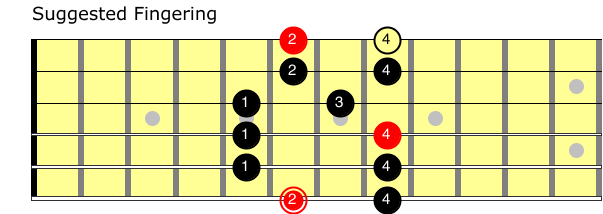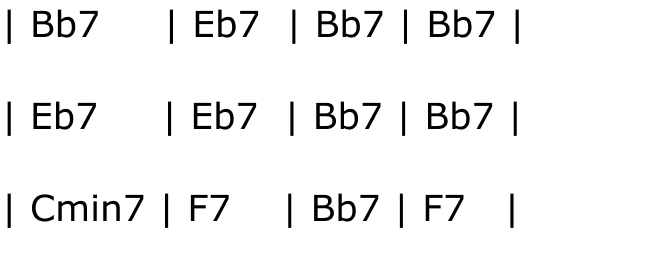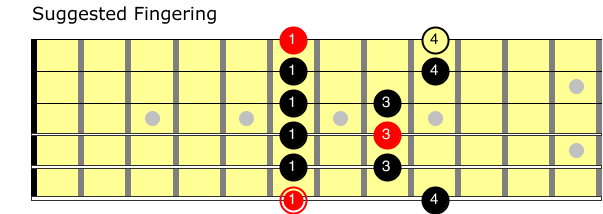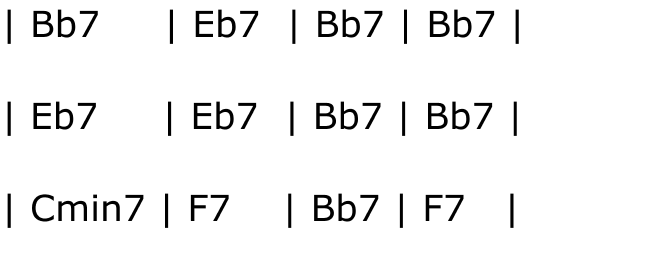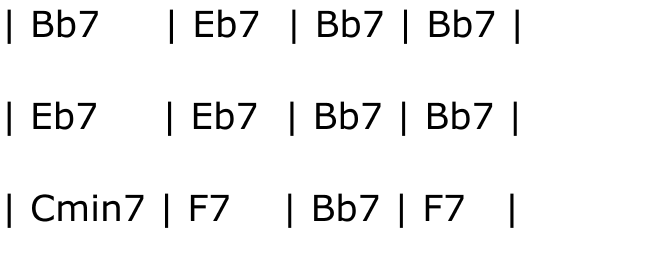 Jazz improvisation for guitar often becomes more complicated than it really needs to be. For some students, even learning how to improvise along with a blues progression can be a difficult thing to do. Both students and teachers dive deep into the theory aspect of soloing, and get stuck thinking about what they are going to play instead of using their ears and creating interesting melodies. One reason for this is that traditional theory doesn’t apply to the blues in a literal way, so students have to learn the theory in traditional terms, and then learn all of the exceptions that apply to the blues. This way, you end up having to learn, unlearn, and relearn your theory - just to play a blues solo on the blues. Luckily, it doesn’t have to be this complicated. If you can learn to use your ears and create melodies, you can rely on a couple of simple tools to get you started improvising and playing jazz guitar solos on the blues. (There is always time to learn the other theory ideas later - the goal right now is to start making some music!) In this jazz guitar lesson, you will learn
What You Need To Know FirstTo get the most out of this lesson, you’ll need to be comfortable with one pattern for the major pentatonic scale, and one pattern for the minor pentatonic scale. Scale diagrams will be provided throughout the lesson, so if you feel comfortable enough reading diagrams you’ll be able to follow along pretty easily. If you start to feel lost thinking about these scale patterns, click here to get step by step instructions on pentatonic scale patterns for guitar. Improvising On The Blues - Major Pentatonic ScaleMost of the time if you’re playing a blues, the major pentatonic scale is going to be your safest first choice. This scale pattern sounds pretty good over the entire blues progression for the most part, and is easy to start finding some melodies you can use to play solos on the blues in major keys. For this lesson, we’re going to use the Bb Major Pentatonic Scale starting on the 6th string. Follow along with the scale diagram to make sure you’ve got all the right notes: Using the backing track below, play this scale up and down slowly a few times. Take your time, and listen to how each note you play sounds in relation to the backing track. Playing each note slowly will do you more good than trying to go through the scale quickly. Below you will also find a Bb Blues progression for reference. Bb Blues Progression:Backing Track:Once you’ve gotten comfortable with the scale pattern, start to improvise a little bit. Keep things simple - the real goal here is to be listening to how each note you play sounds with the backing track as much as possible. This exercise is a form of ear training to help your ears and fingers work together - don’t skip this step! This will help you develop a feel for what notes will sound good with different chords, without thinking too hard about it. You’ll probably find that most of the notes sound pretty good most of the time, and one or two of them don’t always sound great, depending on what is going on in the backing track. Just do your best to keep track of what you like to hear as you play, and don’t get to analytical about what you are doing. The goal here is to get a “feel” for what sounds good as you play. Practice this until it starts to feel comfortable and easy to do - then move on to the next section. Improvising On The Blues - Minor Pentatonic ScaleThe minor pentatonic scale is another option for you to use for guitar solos on the blues. Since it contains notes that clash with some of the chords in the blues, it’s best if used to add an extra color in this case - not as a foundation for your solo. A common mistake for students learning to improvise, or players who come from a more rock background is to use the minor pentatonic scale anytime they improvise on a blues. For this lesson we’re going to use the Bb Minor Pentatonic Scale starting on the 6th string. Follow along with the scale diagram to make sure you’ve got all the right notes: Using the backing track, play this scale up and down slowly a few times. Take your time, and listen to how each note you play sounds in relation to the backing track. Playing each note slowly will do you more good than trying to go through the scale quickly. Below you will also find a Bb Blues progression for reference. Bb Blues Progression:Backing Track:Once you’ve gotten comfortable with the scale pattern, start to improvise a little bit. Keep things simple - the real goal here is to be listening to how each note you play sounds with the backing track as much as possible. This exercise is a form of ear training to help your ears and fingers work together - don’t skip this step! This will help you develop a feel for what notes will sound good with different chords, without thinking too hard about it. You’ll probably find that sometimes the notes in this scale don’t feel as comfortable as the major pentatonic scale, and that’s ok. There will also be times where these notes are a better choice. Just do your best to keep track of what you like to hear as you play, and don’t get to analytical about what you are doing. Practice this until it starts to feel comfortable and easy to do - then move on to the next section. Alternating Major And Minor PentatonicIn a final step for this process, we’ll work on alternating between the major and minor pentatonic scales to improvise over the blues. If you’ve gone through the previous two exercises, you’ll have a feel for which scales are going to sound good as you get going. Try your best not to think too hard about it - just use your ears to decide when to switch scales, and experiment with what sounds good to you. The key is to pay attention to whether or not you like how a note sounds, instead of just letting your fingers run wild. Keep playing through the progression and you will get a better and better feel for what is going to sound good in a jazz guitar blues solo. Bb Blues Progression:Backing Track:Things To Think About With some practice, you’ll be able to effectively use the major and minor pentatonic scales to improvise jazz guitar solos on the blues progression. Knowing what tools to use is a good first step - practice your major and minor pentatonic scales regularly to keep them under your fingers. The key to using these tools effectively is regular practice and experimentation. Improvise on the blues as often as you can, and use your ears to decide when to switch from major to minor, or from minor to major Keep paying attention to how the notes sound, and do your best to keep yourself from thinking too hard about what you’re playing or when you’re going to switch scale patterns. Keep practicing, and let me know how it goes! Jazz Guitar LessonsIf you're looking for a fun way to take your jazz guitar playing to the next level, you're in the right place.
I can help you improve your skills with jazz guitar lessons in Portland Oregon, or online jazz guitar lessons. Get the personalized help you deserve with jazz guitar lessons in person or online. Contact me today to try a lesson, or get your questions answered.
0 Comments
Your comment will be posted after it is approved.
Leave a Reply. |

